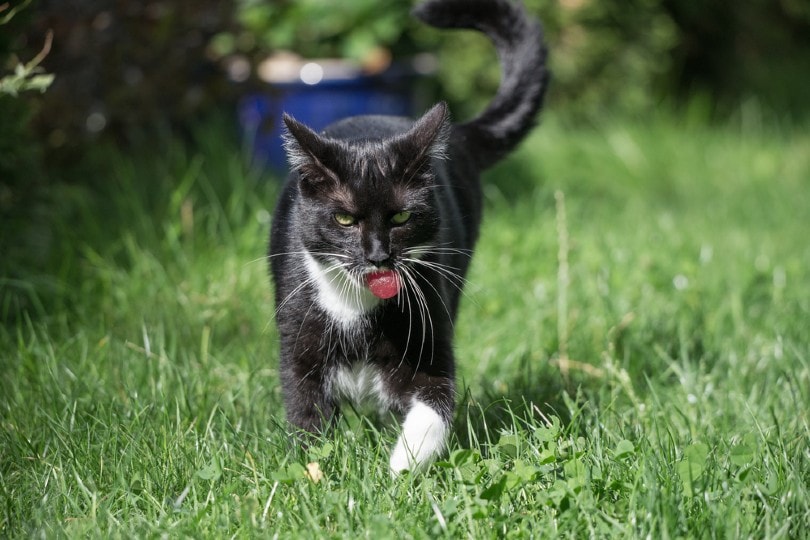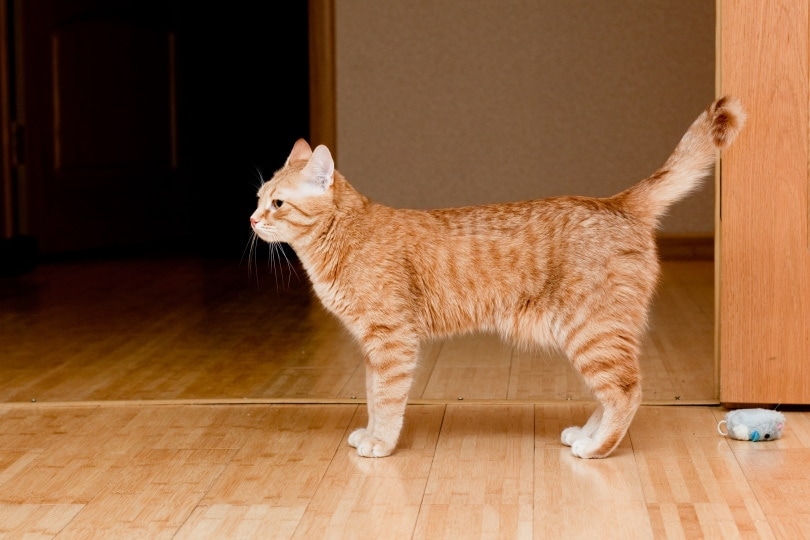Where Do Cats Pee From? Feline Urinary Anatomy Explained (With Infographic)

Updated on
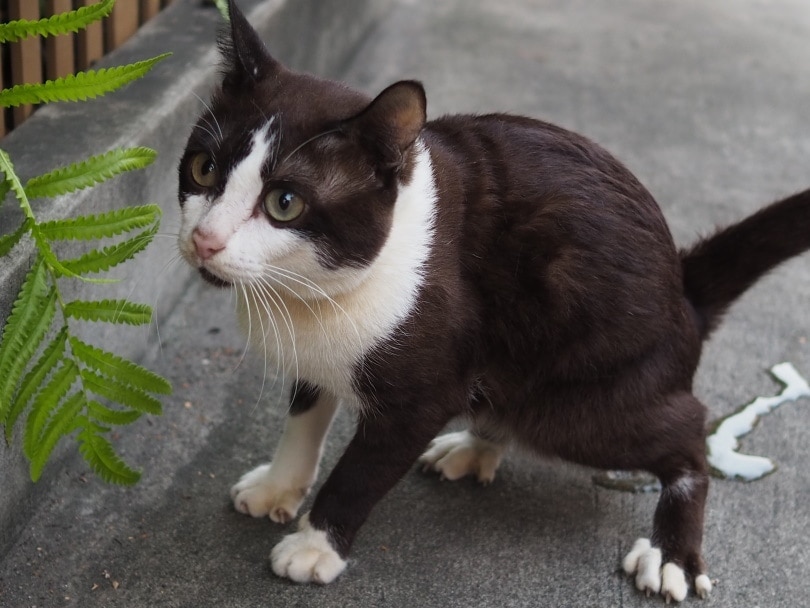
The toilet habits of our pets are one of many things that we know a great deal about. Keeping track of our cat’s bathroom habits is useful for a couple of reasons: so we know when we need to clean out the kitty litter and so we can monitor our cat’s health.
While we’re familiar with how our own bodies work, many people wonder how feline anatomy works. Despite their four legs and spine-turning flexibility, our cat’s internal workings are similar to ours. This includes their urinary tract and where they pee from.
How Do Cats Pee?
Cats are particular about when and where they pee. They can also be strangely shy about going when somebody is watching. If you have indoor cats that use a litter tray, you’re bound to have accidentally intruded on their bathroom trip at some point.
Both male and female cats pee the same way. They’ll squat, spread their hind legs, and lift their tail. Afterward, they’ll bury their urine in whatever loose earth, sand, or kitty litter that they did their business in.
Intact tomcats will also spray urine from a standing position to mark their territory. They’ll back up to a wall, bush, or anything else that they deem suitable and spray. This isn’t urinating so much as just marking their territory with a few pungent droplets. Female cats do this too, especially when they’re in heat.

Where Do Cats Pee From?
Understanding where your cat pees from means understanding their anatomy, in particular, their urinary tract. Like in our bodies, the feline urinary system consists of kidneys, ureters, bladder, and urethra. All these organs play an important part in our cat’s urinary tract and work to remove waste fluids from the body.
Here’s an overview of how each of these organs works and where they’re located:
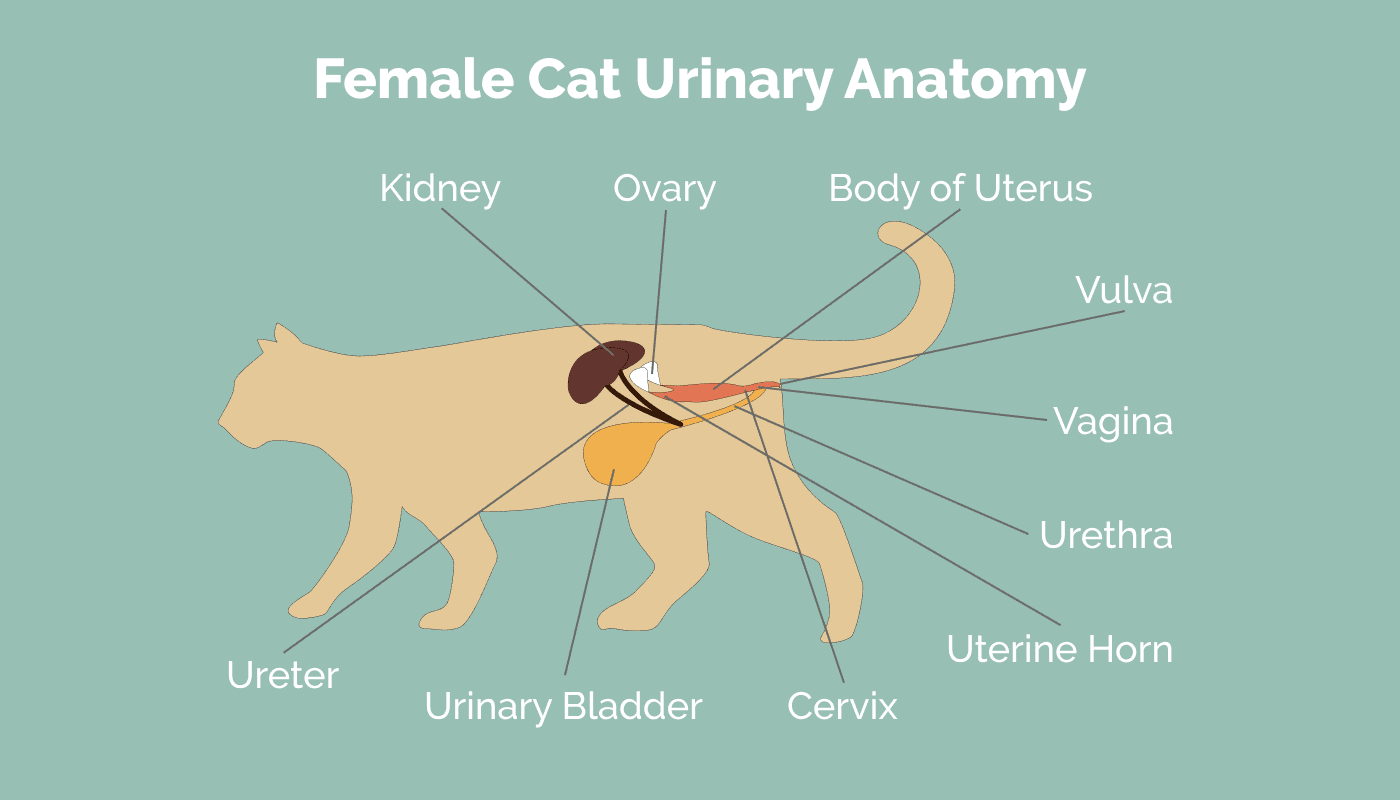
Kidneys
The kidneys work as a pair, although you and your cat can both survive with only one. They’re recognizable by their bean-like appearance and are located near the spine, close to the last rib.
It’s the kidney’s job to filter out waste products, regulate the pH balance of body fluids, control salt levels and blood pressure, and convert vitamin D to calcitriol. In the case of your cat’s urinary tract, the kidneys are right at the start. The kidneys collect all the unnecessary fluids after the body has the proper amount of water and salt to be healthy.
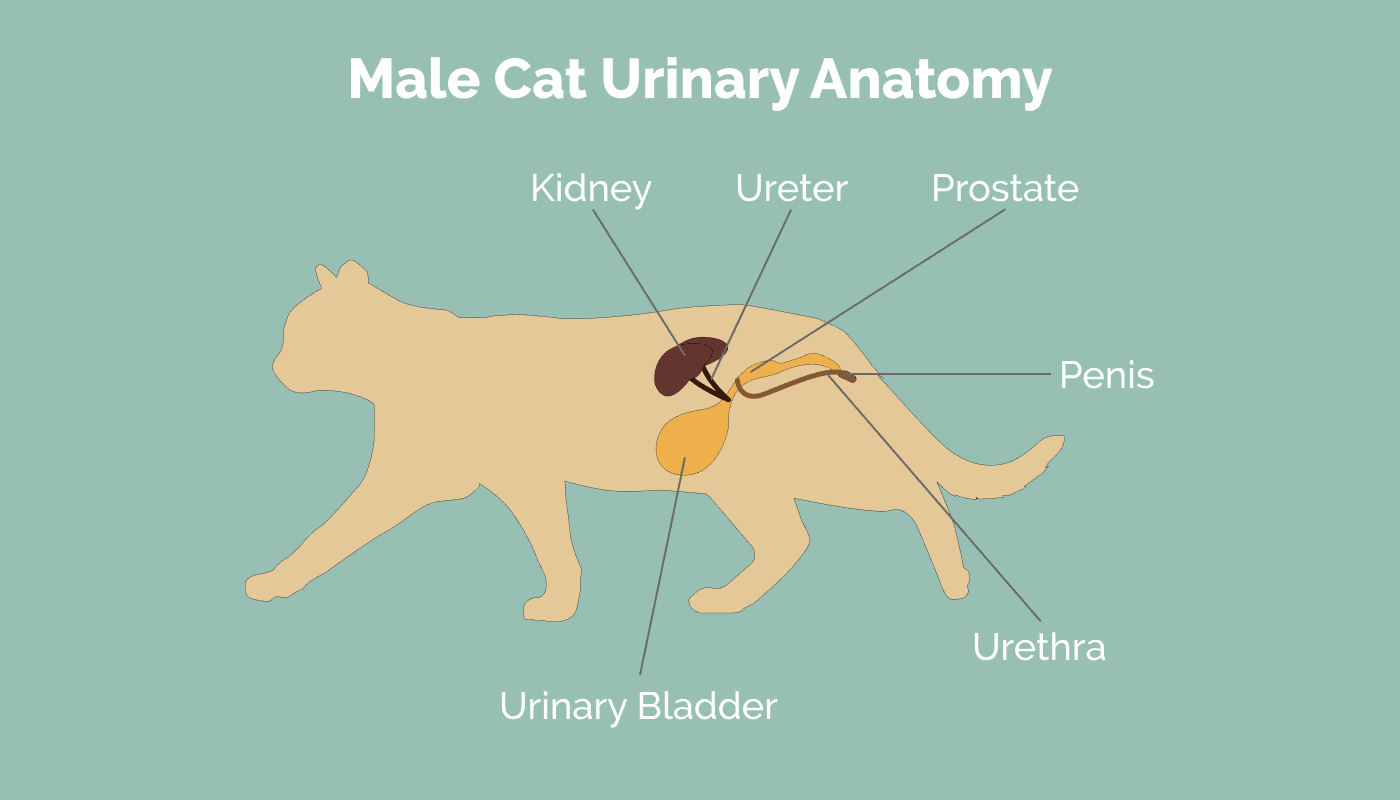
Ureters
Next up are the ureters. These are tube-like passages connecting the kidneys to the bladder. Since there are two kidneys, there are two ureters. They don’t have quite as complicated a purpose as the kidneys themselves, but they’re still essential in transporting urine from the kidneys to the bladder.
Bladder
Stage three of the urinary tract is the bladder; the yellow color structure in the next illustration. Found in the back of the abdomen, this balloon-like organ stores urine. Sealed by a sphincter, a circular-shaped muscle, the bladder distends as it fills up and then sends a message to the brain when it needs to be emptied. These nerve signals are what tell your cat that they need to go to the bathroom.
Although it’s only a temporary storage spot, your cat’s bladder can store urine for 24–48 hours. This can be dangerous, though, due to the build-up of toxins in your cat’s system after the first 24 hours. If you’ve noticed that your cat hasn’t urinated for 24 hours, check-in with your veterinarian.
Urethra
If you’re unfamiliar with anatomy, whether it’s your cat’s or your own inner workings, the urethra is easy to confuse with the ureter.
Whereas the ureter connects the kidneys to the bladder, the urethra is the final stage of the urinary tract and carries urine out of the body. Once the bladder is full and has announced the need to be emptied, the urine is released by the sphincter and goes through the urethra and out of your cat’s system. The urethra is different in males and females due to the different structures of the reproductive organs. A male cat’s urethra is thinner and longer than a female cat’s urethra.
How Do Newborn Kittens Pee?
If you’ve ever been around a mother cat and her newborn litter, you might have noticed how much time she spends licking their rear ends after they’ve eaten. This isn’t just her way of teaching them cleanliness; it’s how she ensures their health, by stimulating their bladders since newborn kittens aren’t capable of peeing or pooping by themselves.
This is an important thing to remember if you ever find yourself taking care of an orphaned litter. Their inability to go to the bathroom unaided can be fatal, so prompting their tiny bladders to work regularly is essential. In the mother cat’s stead, you can use a warm towel or a cotton ball.
Final Thoughts
Although cats are a different species than us and have different body structures, their inner workings are incredibly similar to our own. Their urinary tract in particular has the same organs that we do and works the same way. The kidneys, ureter, bladder, and urethra rid the body of waste fluid by transporting, storing, and finally excreting urine.
If you’ve ever wondered how your feline’s body works, we hope that this answered a few questions!
Related Reads:
- Do Cats Pee and Poop at the Same Time? What You Need to Know!
- Cat Spraying vs Peeing: Main Vet-Reviewed Differences
Featured image credit: nanniezwawa, Shutterstock




